[Fix] ‘Windows could not automatically detect this network proxy settings’
Sometimes you might see a yellow warning sign on your Wi-Fi name in the system tray. If you right-click the Wi-Fi name and select Troubleshoot then you will most likely see the error with the message “Windows could not automatically detect this network’s proxy settings”. Although the yellow warning sign doesn’t always mean that you will get this error but it’s highly likely especially if you can’t use your internet or if your internet is really slow. This error can appear at any time without any prior signs and will most likely prevent you from using the internet.
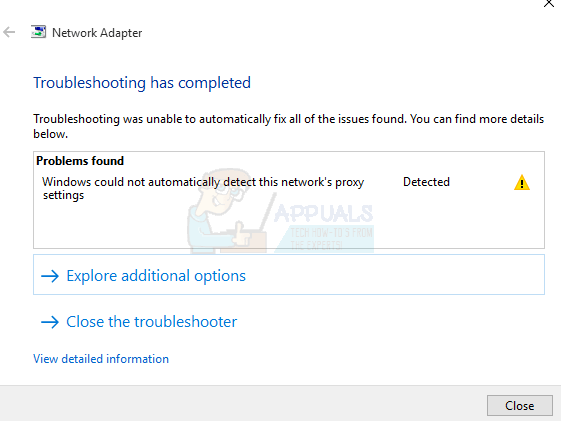
The error can be caused by a change in proxy settings of your Windows. The change in settings can be caused by an infection or change in system files and network settings or file corruptions that will lead to a change in network settings. All of these can be caused by malware or because of some system file issues on your computer which can also prevent an internet connection from being established in Windows.
You should go through the general troubleshooting first to eliminate any possibility. If the general troubleshooting doesn’t solve the problem then move towards the solution methods because those are in detail.
1. Reset your Network Configurations
The very first thing you should do is reset the Winsock with the commands given below. Basically what you will do by following the commands given below is reset the Winsock settings back to the default or clean state. So if any changes were made that were causing the issue the problem should solve with this method.
- Press the Windows key once
- Type cmd in the Start Search box
- Right-click on the Command Prompt and click Run as administrator…
- Type in the following command and press “Enter”.
netsh winsock reset catalog

Resetting your Winsock Catalog - Now restart your computer and check whether the problem is solved or not. If it’s still there then continue.
- Type in the following command and press enter.
netsh int ipv4 reset reset.log
- Then type the following commands.
netsh int ipv6 reset reset.log ipconfig /flushdns ipconfig /release ipconfig /renew
- Type exit and press Enter
Now check if the problem is solved or not. If the problem isn’t solved then restart your computer and then check.
2. Disable Automatic Proxy Settings Check
Going to the internet options given in your Windows and unchecking the proxy server option solves the problem as well. Basically, you are turning off the option that tells your computer to use certain proxy settings. Whether you turned it on yourself or not, it’s a good thing to turn it off so that Windows can automatically detect proxy settings.
- Hold Windows key and press R
- Type inetcpl.cpl and press Enter

Run/inetcpl.cpl - Click Connections tab
- Click the LAN Settings button
- Uncheck the option that says Use proxy servers for your LAN (these settings will not apply to dial-up or VPN connections) under the proxy server section
- Click ok and then click ok again.
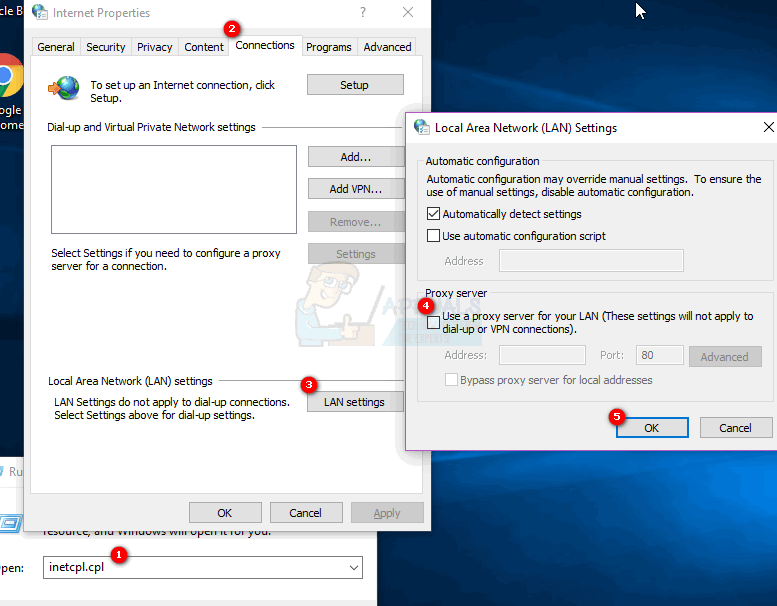
Now check your internet connection and it should work fine now.
3. Check for Virus
Sometimes malware or infection might be causing this issue. There is a lot of malware that changes the settings of your internet to either stop your access to the internet or make all your traffic go towards their preferred settings so that it can be watched.
This is an extreme case but not an impossible one. This can be an issue for you especially if you don’t have any Antivirus or the issue started after installing new software.
Follow the steps given below to check whether the issue is because of an infection or not
- Use an Antivirus to scan your computer thoroughly. You can use any Antivirus but we recommend Malware Bytes. Go here and download the Malware Bytes for your computer and install it.
- Scan your computer and see if it gets any infections. If Malware Bytes catches some bad files then delete those and then check if the issue is still there or not.
4. Restore your Windows from System Restore
If the issue is caused by a change in settings because of file corruption or infection then performing a System Restore is also a good option. Performing a System Restore is the best option especially if the problem is new or started after downloading a certain software.
Go here for a complete step-by-step guide to restoring your system from a System Restore Point. Try to go back to a point when you are sure you didn’t have this problem. Once you are done, check to see if the problem is still there or not.
5. Do an SFC Scan
Since your problem can be because of corrupted system files that changed the internet settings, perform the SFC scan is a good option and solves the problem for many users. Basically, an SFC scan scans your system files and replaces any corrupted ones with the correct ones that are stored in your system.
So if the problem was because of corrupted files, the SFC scan should solve it.
- Press the Windows key once
- Type cmd in the Start Search box
- Right-click on the Command Prompt and click Run as administrator…
- Type SFC /scannow and press Enter
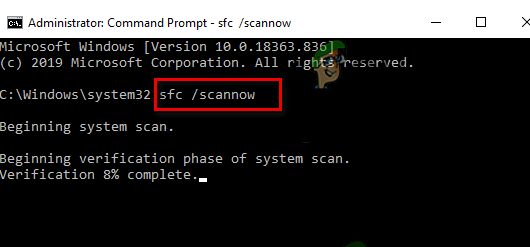
Perform an SFC Scan - Wait for it to finish. You will see the results
6. Reset your Network through Settings
In certain cases, some network restrictions or Firewall configurations can prevent the computer from being able to connect to the internet. It is also possible that certain network configurations have been outdated on your computer. Therefore, in this step, we will be performing a network reset. For that:
- Press “Windows” + “I” to open the settings.
- In the settings, click on the “Network and Internet” option and then select “Status” from the left pane.
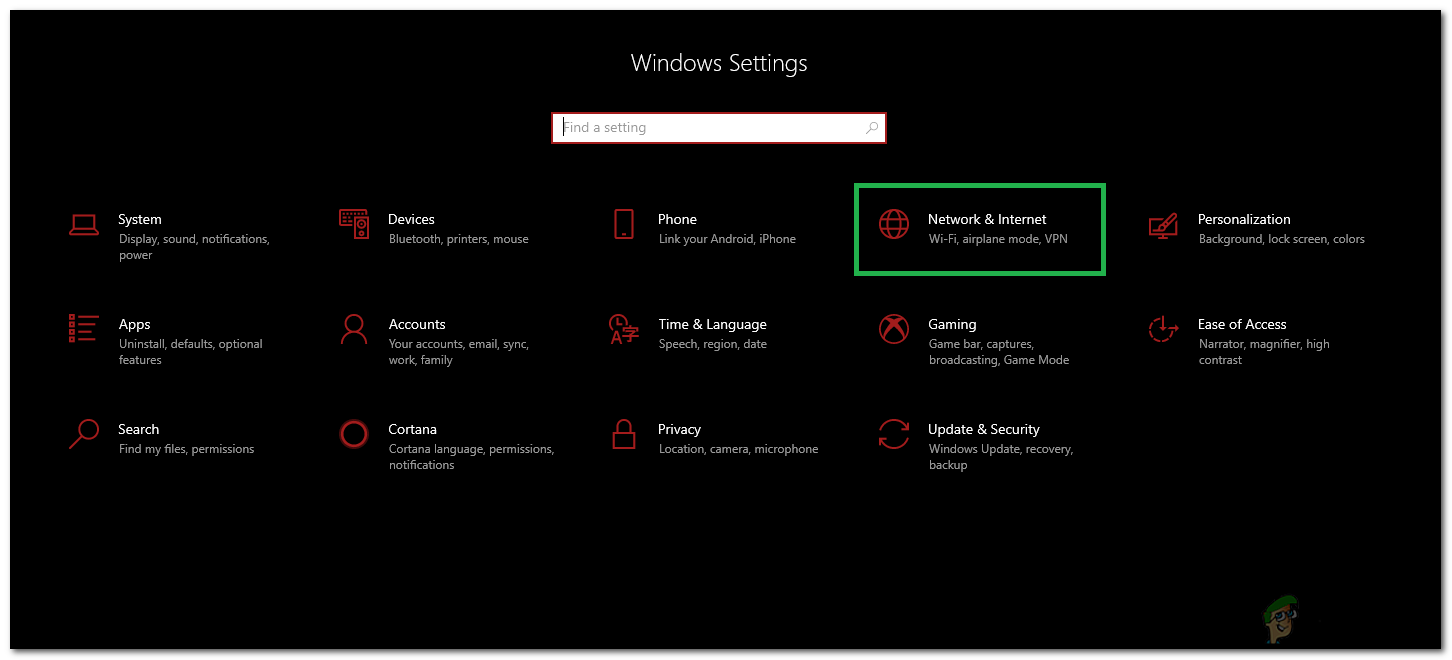
Selecting “Network and Internet” Options - In here, click on the “Network Reset” option at the end of the list and select the “Reset Now” button.
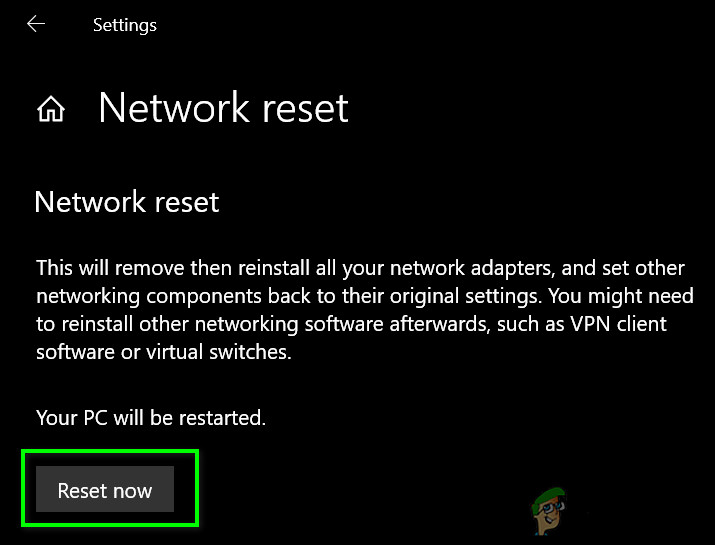
Press Reset Network Button - Check to see if the issue persists after the network has been reset.
7. Reset your Network Adaptor
The network adapter may have acquired some incorrect configurations which are preventing it from being able to function properly. Therefore, in this step, we will be resetting the network adapter. To do so, follow the guide below.
- Press “Windows” + “R” to open the Run prompt.
- Type in “ncpa.cpl” and press “Enter” to open the Network Connections settings.
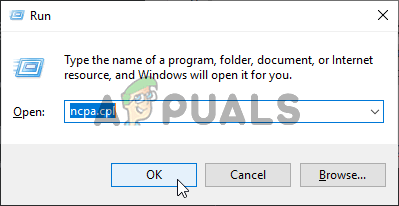
Running Network settings - In the Network Connections, right-click on the Network Adapter that you are using and select “Disable”.
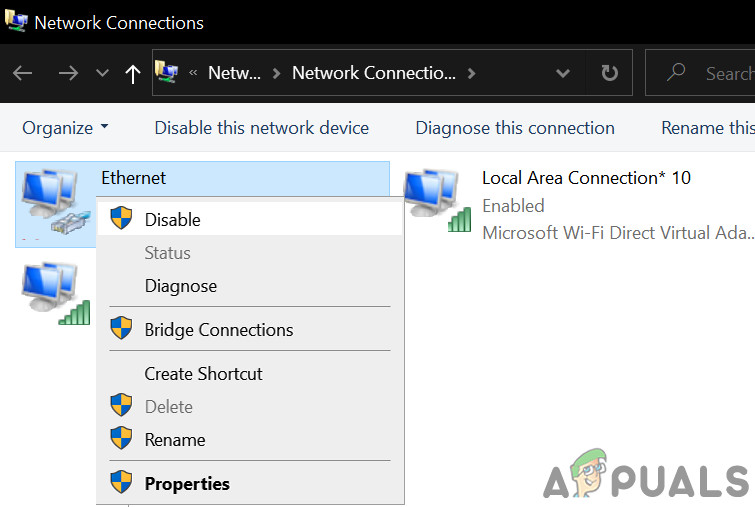
Disable Network Connection - After some time, right-click on it again and click on “Enable”.
- Wait some time and check to see if the issue persists.
Once the scan is finished and successful, try to check the internet again and see if the problem is there or not.
8. Enable the Required Services
Some services are responsible for setting up new connections and make sure that all the configurations are working as they should. However, these services can be stopped by a third-party bad tweaking program. To fix this issue, follow these steps:-
- Search for Command Prompt in the search bar.
- Right-click on the Command Prompt and run it as an administrator.
- Type the following commands one by one to enable the essential configuration services:-
sc config Wlansvc start= demand sc config dot3svc start= demand sc config Dhcp start= auto
- Now restart your computer and check to see if the issue persists.
9. Reset and Setup a Static IP address
Setting up your Static IP can potentially fix this issue as you will manually configure the essential settings that are required to run the network smoothly. Fortunately, we have an article on this topic with a detailed explanation and methods to set up a Static IP address. You can check to follow the steps to reset and change your IP address here.
10. Reset all Network and Adaptor Configurations
We are going to reset our network configurations and remove the drivers of network adaptors completely from our Windows. We can do that by using Command Prompt, resetting these configurations will also reset and install your network drivers so you don’t have to worry about anything. To reset all your network settings, follow these steps:-
- Search for Command Prompt in the search bar and click “Run as Administrator”.
- Once the Command Prompt is opened type the following command and press enter:-
netcfg -d
- Wait for the Command to execute properly and once that’s completed, you can simply restart your computer.
- Check to see if the issue persists.
11. Enable Custom 3D Support (MSI Afterburner)
This solution primarily focuses on users who use the MSI Afterburner along with the Riva Statistics Tuning Server to monitor the performance of their hardware. In some cases, this setting needs to be enabled in the Riva Server to get everything working in line with the overlay. For that:
- Click on the “System Tray” icons and double click on the “Riva Tuner Statistics Server”.
- It should open up its settings, make sure to turn the “Custom 3D support” to “ON”.
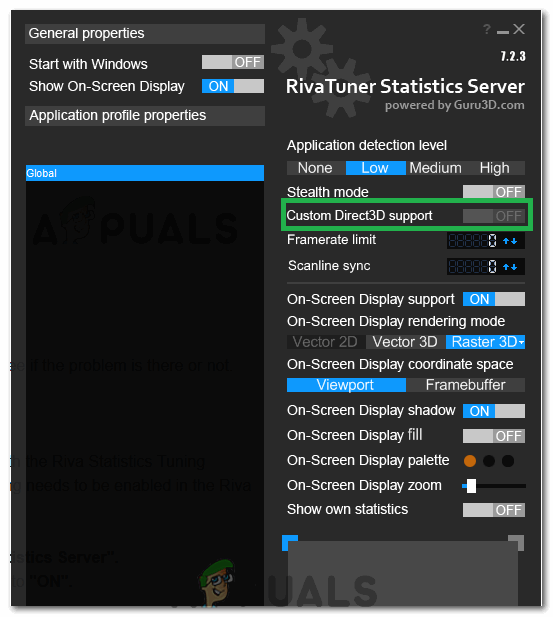
Turning Custom 3D Support ON - Check to see if the issue persists while opening the steam overlay.
If none of the steps above helped you then there is something wrong with your router or internet connection. We really suggest you give your ISP a call and let them know about the situation you are having. So that they can assist you with the problem as in some cases users reported changing their router fixed the issue for them.